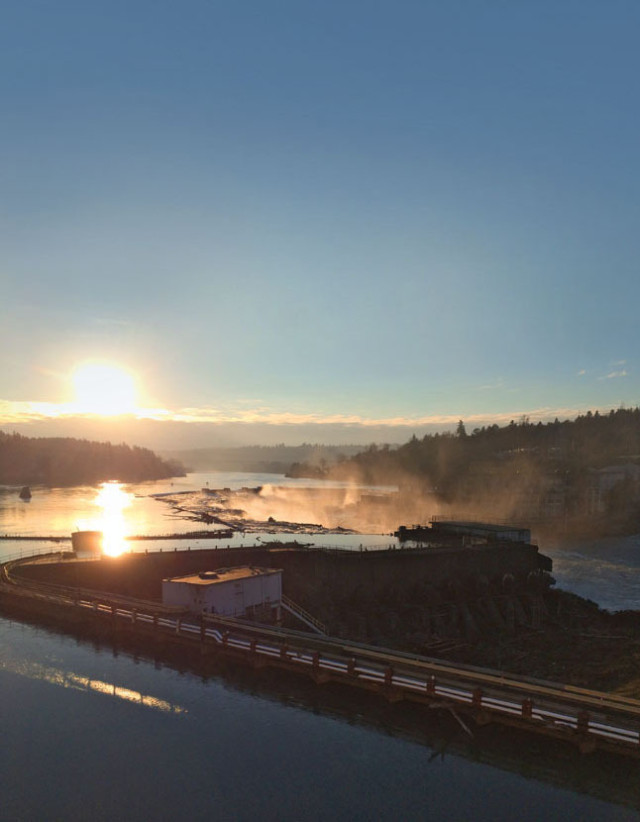Willamette Falls' Next Move

Willamette Falls in Oregon City
Image: Courtesy Sam Beebe, Ecotrust
Like the Phoenician, Greek, and Byzantine ruins found beneath Beirut, the landscape of Oregon City’s Willamette Falls unfolds in layers. Most obviously, the cavernous industrial buildings and arcane equipment of the bankrupt Blue Heron Paper Mill loom like a crumbling monument to imperial ambition. Below those remains lie the foundations of the Willamette Woolen Mills (1857–1875). Then there is the actual land, where early inhabitants fished for salmon and lamprey over the centuries.
Each phase of history took advantage of a 20,000-cubic-feet-per-second, 42-foot-high cascade, in North America second only to Niagara Falls by volume of water. For this powerful, mist-sprayed place—easily one of the most spectacular redevelopment opportunities in the West—the question is, what’s the next layer?
This month, Oregon City begins rezoning the Blue Heron complex to be more inviting to developers. The move reflects the momentum of the unlikely coalition working to steer the site’s future: Tootie Smith, an ultra-conservative Clackamas County commissioner with a rabble-rousing bent; decidedly liberal Metro councilor Carlotta Collette; Umatilla and Grand Ronde tribal leaders; and many others.
These allies have settled on a vision that combines conservation, public access, and private enterprise. About 15 acres would return to the river, which floods regularly here, as parks and habitat designed to function at high or low water. Six city blocks of high ground would become an extension of Oregon City’s downtown: retail, office, hotel, light industrial, and, maybe, a museum devoted to the site’s heritage. In its 2013 session, the Oregon legislature set aside $5 million to help. Collette and Smith are cooing in harmony—testament, perhaps, to this spot’s inherent power.
“I’ve walked out there and felt the spray,” says Smith, who, from her seat on the Clackamas County Commission, plans to aggressively lobby Congress and federal agencies for money. (She’s also running for Congress herself.) “We want the public to have access, and we want a private employer to come in and make money.”
For now, Willamette Falls’ next layer remains mere ink, in renderings and zoning guidelines. Two buyers have sniffed and walked away, but another possible owner recently bid $2.8 million. As one study puts it, “the market fundamentals”—incentives to draw tourists, shoppers, and businesses—are weak. Any new development, the report adds, will have to be “pioneering.” But thanks to tours from Metro, visitors can step out on the usually off-limits banks, feel the mist, and sense the power and potential.




